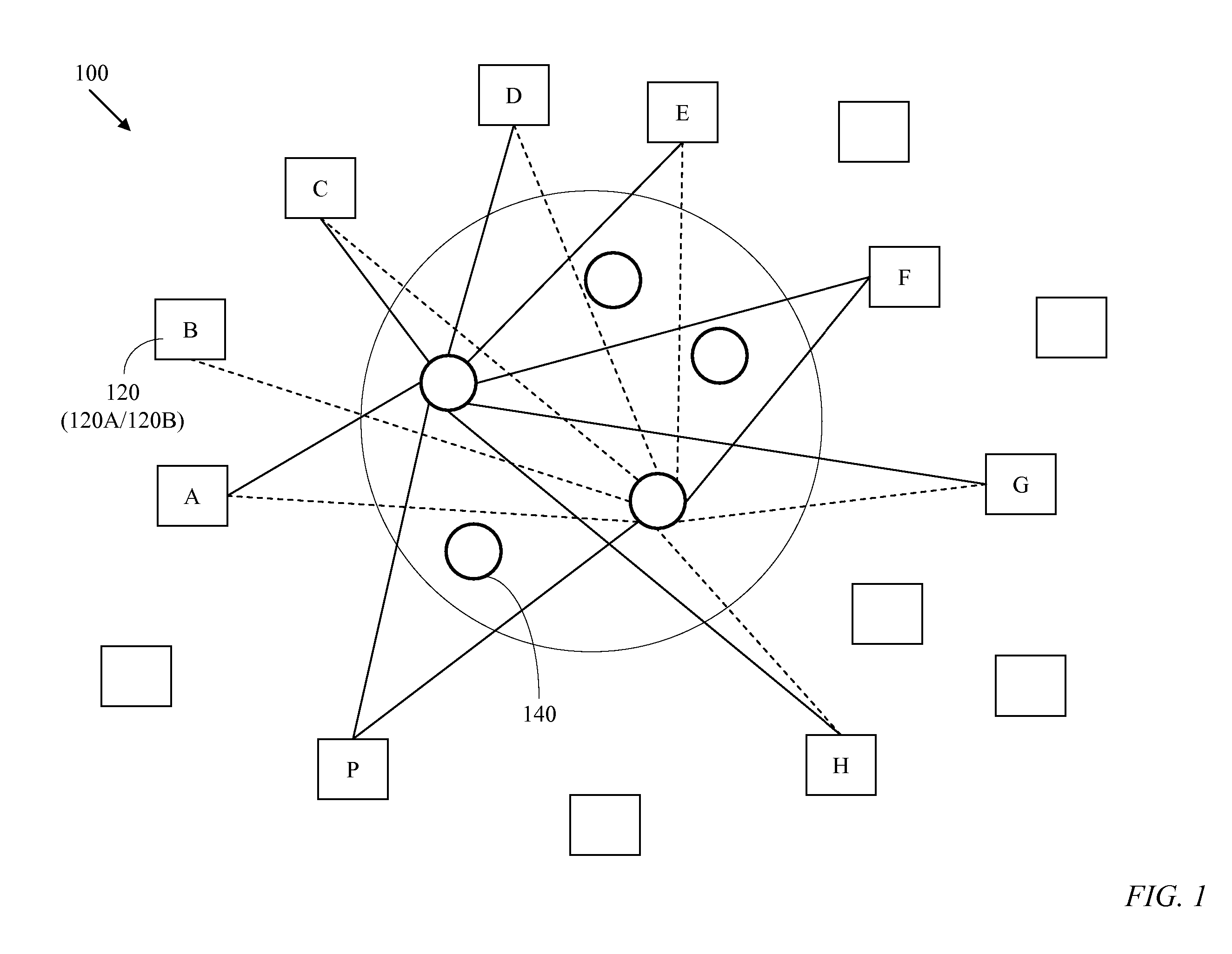Rate-Controlled Optical Burst Switching
a technology of optical burst switching and rate control, applied in the field of data networks, can solve problems such as burst loss, burst loss, and latency and burst loss of burst transfer
- Summary
- Abstract
- Description
- Claims
- Application Information
AI Technical Summary
Problems solved by technology
Method used
Image
Examples
Embodiment Construction
[0055] A star network's main attraction is its high performance and simplicity of control. However, it is suitable only for limited geographic or topological coverage. A composite star network 100, illustrated in FIG. 1, may be viewed as a superposition of several star networks which are merged only at the edge nodes 120 while the core nodes 140 can be widely distributed and independent. An edge node 120 comprises a source node 120A and an associated sink node 120-B. Hereinafter, reference to an edge node 120 also implies reference to the source node 120A and the sink node 120B that constitute the edge node 120. Similarly, reference to a source node 120A or a sink node 120B implies reference to the edge node 120 to which either belongs. The core nodes 140 of a composite-star network are not connected to each other. The composite-star network 100 retains the attractive properties of a star network while providing a wide geographic and topological coverage. The composite-star network ...
PUM
 Login to View More
Login to View More Abstract
Description
Claims
Application Information
 Login to View More
Login to View More - R&D
- Intellectual Property
- Life Sciences
- Materials
- Tech Scout
- Unparalleled Data Quality
- Higher Quality Content
- 60% Fewer Hallucinations
Browse by: Latest US Patents, China's latest patents, Technical Efficacy Thesaurus, Application Domain, Technology Topic, Popular Technical Reports.
© 2025 PatSnap. All rights reserved.Legal|Privacy policy|Modern Slavery Act Transparency Statement|Sitemap|About US| Contact US: help@patsnap.com



